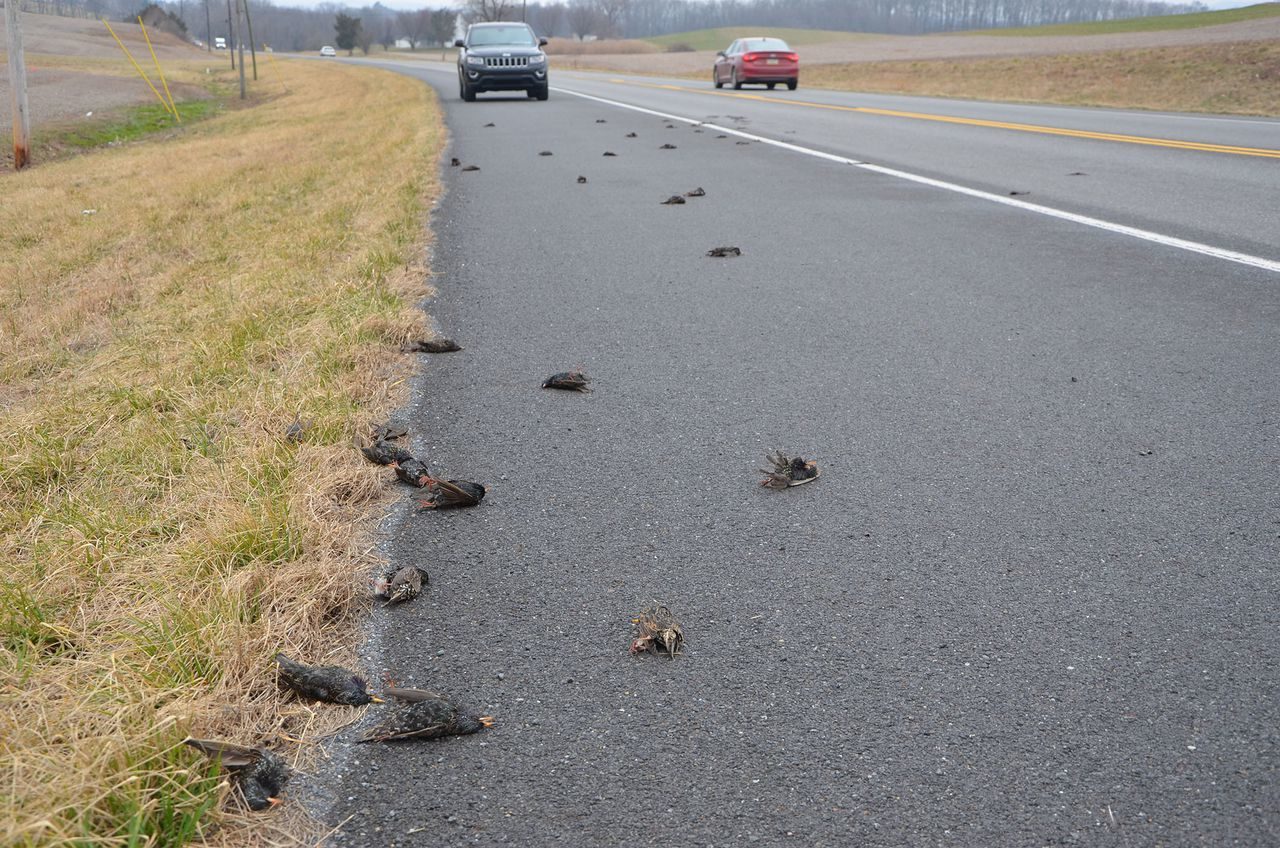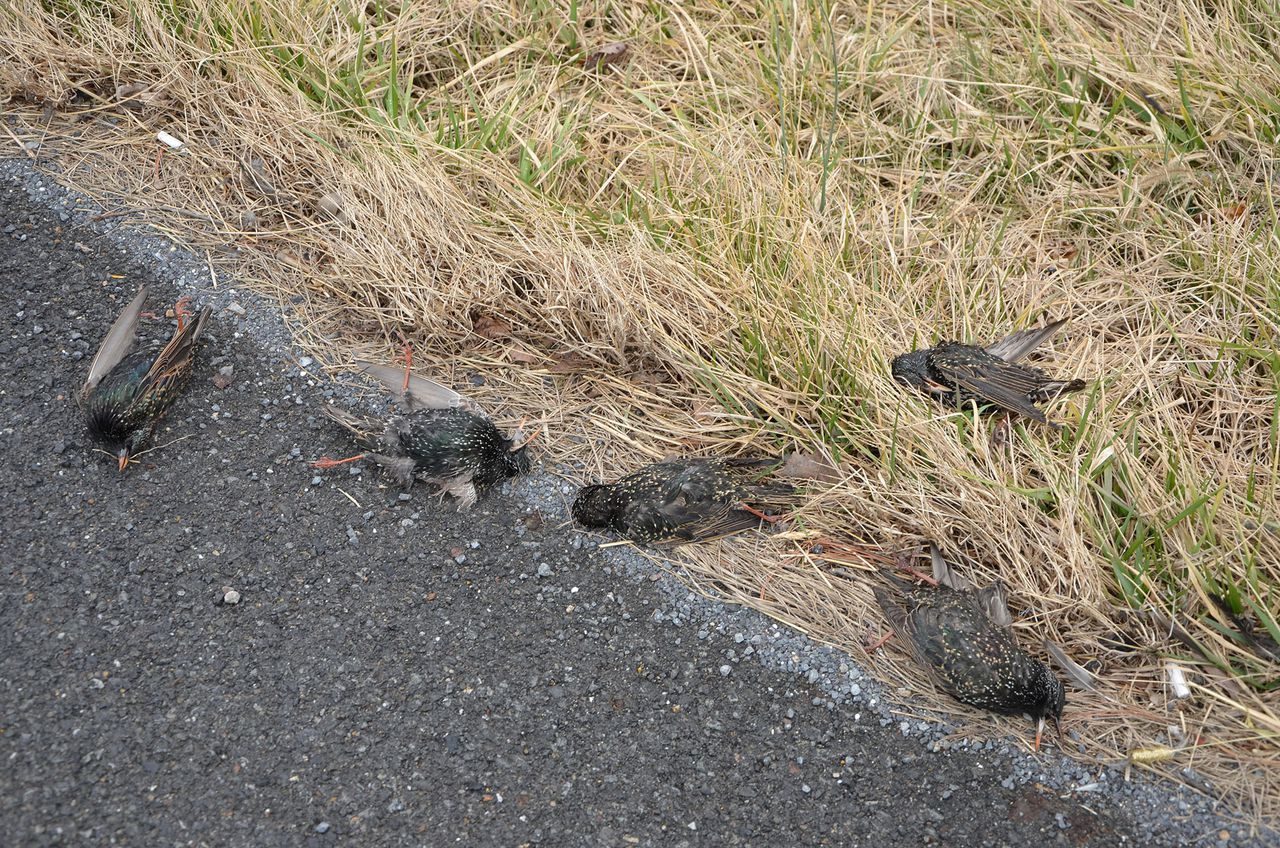
The Pennsylvania Game Commission believes the birds were killed by passing cars and trucks.
"The birds showed signs of blunt-force trauma," said Travis Lau, communications director for the commission. "It's believed they were struck by one or more vehicles."
The 100-plus dead birds, along approximately 40 yards of Route 225 about a mile east of Halifax, were nearly all on the eastbound side of the road. The majority were off to the side of the road, although a couple dozen had been flattened on the eastbound travel lane.
Social media speculation presented several alternative possibilities for the cause of deaths for so many birds in one small location.
Some thought the electrical lines along the road, about 30 feet from the birds, may have malfunctioned and sent a charge through a roosting flock of birds. None of the dead birds were closer than 30 feet to those lines.
Others speculated that agricultural chemicals may have been the cause. The deaths occurred in an open area surrounded by agricultural fields.
And still others wondered in the cell tower 50-75 yards northwest of the birds may have played a part.
European starlings are one of the most common birds in agricultural and residential areas of Pennsylvania.
According to the Cornell Lab of Ornithology, "All the European starlings in North America descended from 100 birds set loose in New York's Central Park in the early 1890s. The birds were intentionally released by a group who wanted America to have all the birds that Shakespeare ever mentioned. It took several tries, but eventually the population took off.
"Today, more than 200 million European starlings range from Alaska to Mexico, and many people consider them pests."
They are a non-native invasive species that competes aggressively against native birds like eastern bluebirds and tree swallows for the limited supply of vital nesting cavities.




Of course the deceptive MSM hopes no one will notice that Harrisburg (which has 5G service*) is IN AND is the County Seat of "Dauphin County"! The location above (1 mile east of Halifax, PA on Route 225 – which is really SE on 225 directly towards Harrisburg, PA, and about 4 miles NW of the Harrisburg, PA city limits.)
1) This link shows that that 5G network went down recently (after the above birdstrikes.) [Link]
2) Granted, it appears that some vehicle strike(s) involved, although I can't accept that at face value as to all of those birds, as it's from the same MSM that failed to discuss this issue and managed to avoid naming Harrisburg. Also, it seems that, at a minimum, 5G disorients birds, which would result in them being more likely to fly into danger.
In contrast, see, e.g., how fluid and synergetic this flight of a flock of starlings is - new word for the day, it's called 'mumeration' - without 5G nearby to interfere, which I dare say it likely does. E.g., Thi s [Link] this, [Link] this, [Link] et al.
STOP 5G!